The uninitiated are always delightfully surprised by Ethiopian cuisine. Not only is it unlike any other African cuisine, but also completely different to anything you’ve ever tasted. It’s flavorsome, healthy, unpretentious and beautifully presented! Much like in rest of Africa, food is eaten with hands. Eating in Ethiopia is extra special because it is often accompanied by hospitality that’ll pamper you to bits. During parties, festivals, and gatherings, you’ll often find people feeding a bite to each other with their hands, a local tradition called ‘gursha’. Or as fans of Simpsons will remember Marge explaining it the way it is, “When you stick a pancake into someone’s mouth, it’s a gursha!”.
Travelling across the country, you’ll be amazed by the diversity of food Ethiopia offers. From grilled meat to sumptuous stews, you’ll be eating your way through rustic villages and fine dine restaurants! This diversity of Ethiopian cuisine and weekly fasting days when Ethiopian Orthodox Christians avoid meat, makes it extremely vegetarian and vegan friendly. Here’s your mini guide to eating in Ethiopia.
Injera
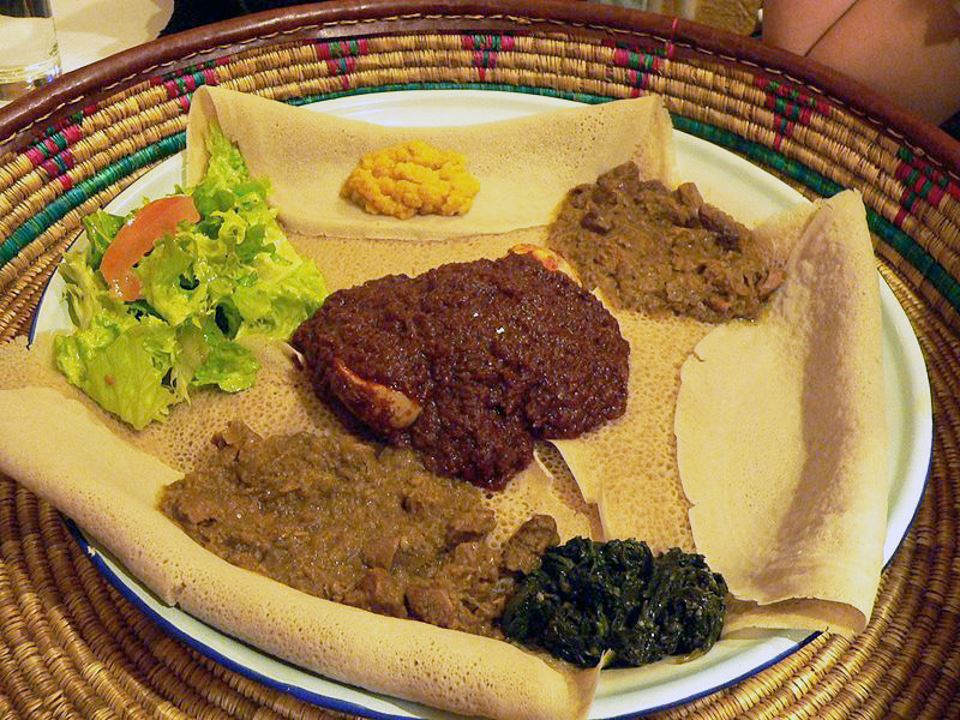
©Rama / Wikicommons
A massive pancake-like flatbread, injera is an ubiquitous staple eaten in every meal in every region of Ethiopia. injera is not dish by itself, but without it, every meal is incomplete. This flatbread, like Indian rotis or chapatis, is used to scoop up curries and stews. It is spread on a large plate or basket and topped with stews, curries, vegetables and grilled meat. Rip off a small piece to scoop the toppings.
It’s made using teff, an ancient Ethiopian grain that’s high in protein, calcium, iron, and naturally gluten-free! As delicious as Injera sounds, it can be an acquired taste because it’s tangy, bitter and even sour on first bite. Try it a couple of times, and it’ll grow on you! Make sure the injera you try has a pale beige color. The darker ones are usually made from substitutes like barley and buckwheat.
Doro Wat



©Matthew Mendoza / Flickr
Doro Wat, chicken wat, is a classic Ethiopian stew. This bright red curry generously laced with spices is often considered as the country’s national dish. It’s fiery ruby hue comes from berebere, a powder made from 12 to 25 different spices. Traditionally, Ethiopians break their 40-day fast on Christmas day by devouring Doro Wat. Typically made in homes, it’s often difficult to find Doro Wat in restaurants, and if you do, you must have it!
Kitfo



Kitfo is Ethiopia’s answer to the French classic, beef tartare. It’s made with ground raw beef marinated in kibbe, spiced clarified butter and mitmita, a spice blend. It is served with injera or a type of flatbread called kocho, a mild cheese called ayibe and cooked greens. Kitfo holds a special place in the hearts of Ethiopians and finds permanent presence in parties and festivals.
Shiro


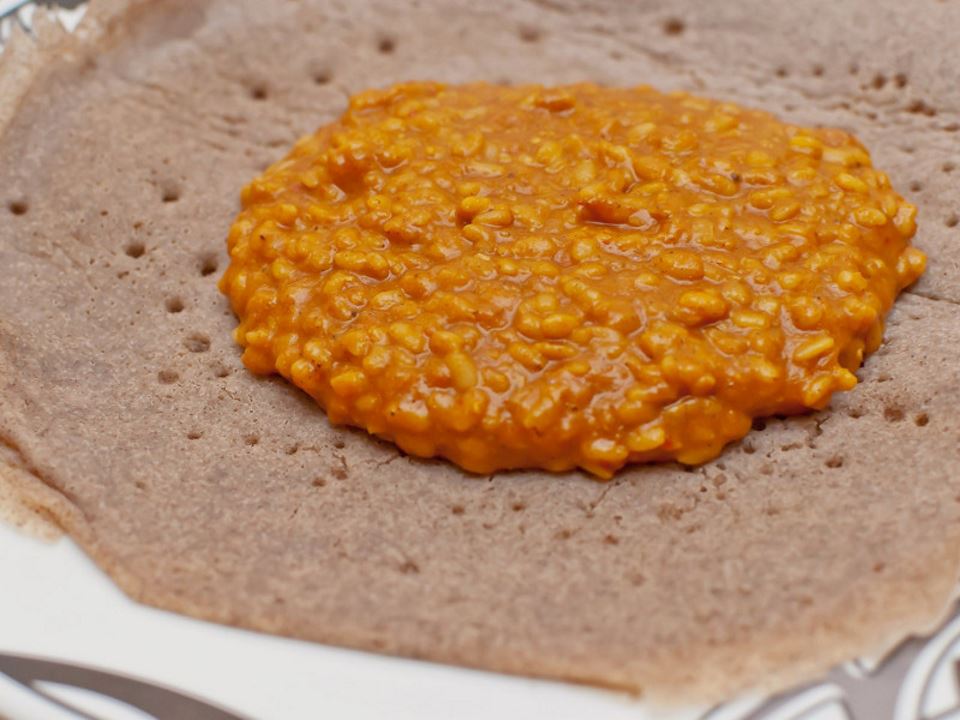
© whats4eats.com
It’s rather rare for someone to dislike Shiro. This luscious, thick stew is made with powdered chickpea or lentils, onions, tomatoes, ginger, garlic and spiced heavily with berebere. It is served atop injera, no prizes for guessing! Usually loved especially by vegetarians and vegans, there’s also find meaty version of the dish called Bozena Shiro.
Tibs


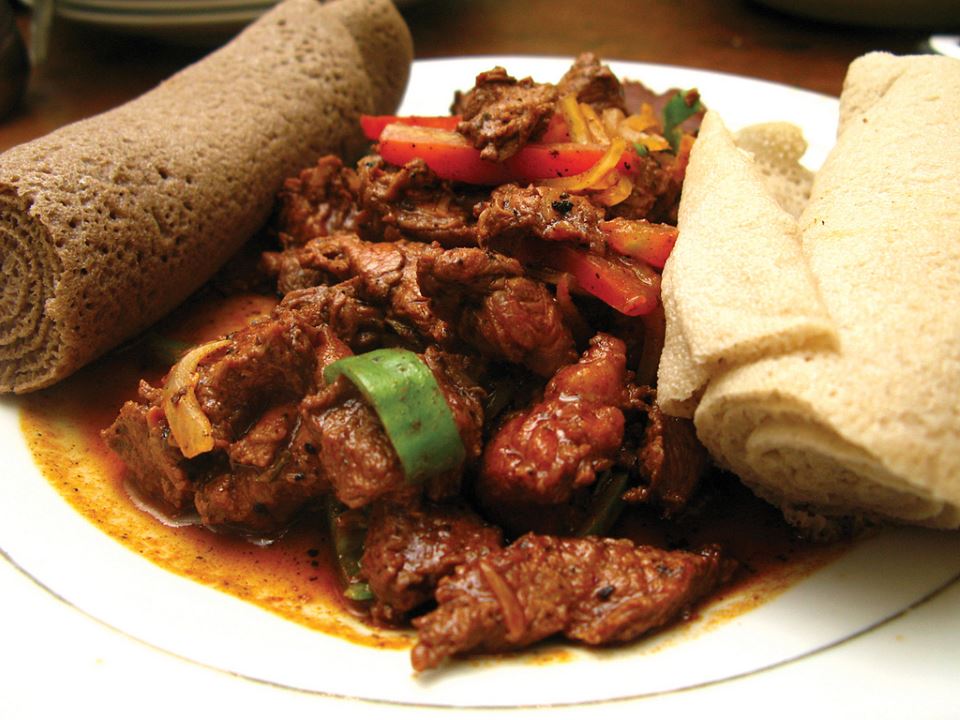
©Dani Bora / Flickr
A perennial favorite, Tibs is usually made to commemorate special holidays. It is a simple dish made with marinated meat (beef, lamb, goat, sometimes even fish) sautéed with vegetables. The country’s favorite ‘go-to’ meat dish, you’ll invariably find tibs on the menus of most Ethiopian restaurants.
Fir Fir


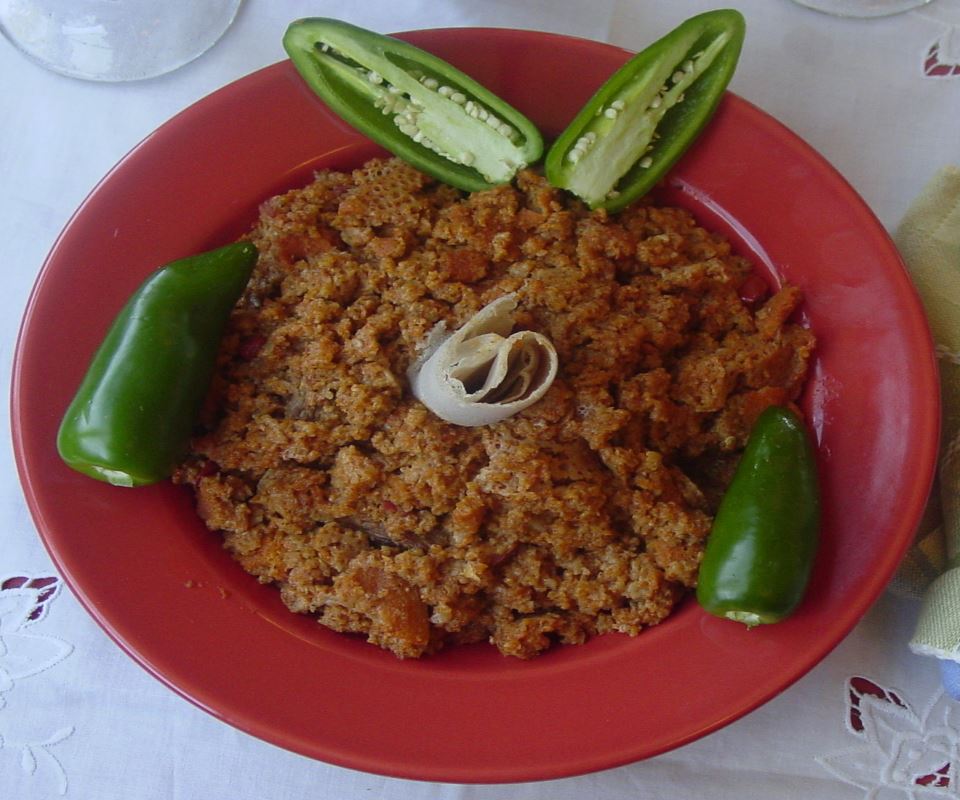
©Temesgen Woldezion / Wikicommons
Fir Fir (also known as Fit Fit) is a typical Ethiopian breakfast made with shredded injera. We did say, Ethiopians eat injera in every meal! This shredded injera, often leftover, is mixed with kibbeh or clarified butter, and berebere spice mix, with a backdrop of thick tomato gravy. It’s warm, stewy consistency makes this comfort-in-bowl dish the perfect cure for hangovers.
Gomen


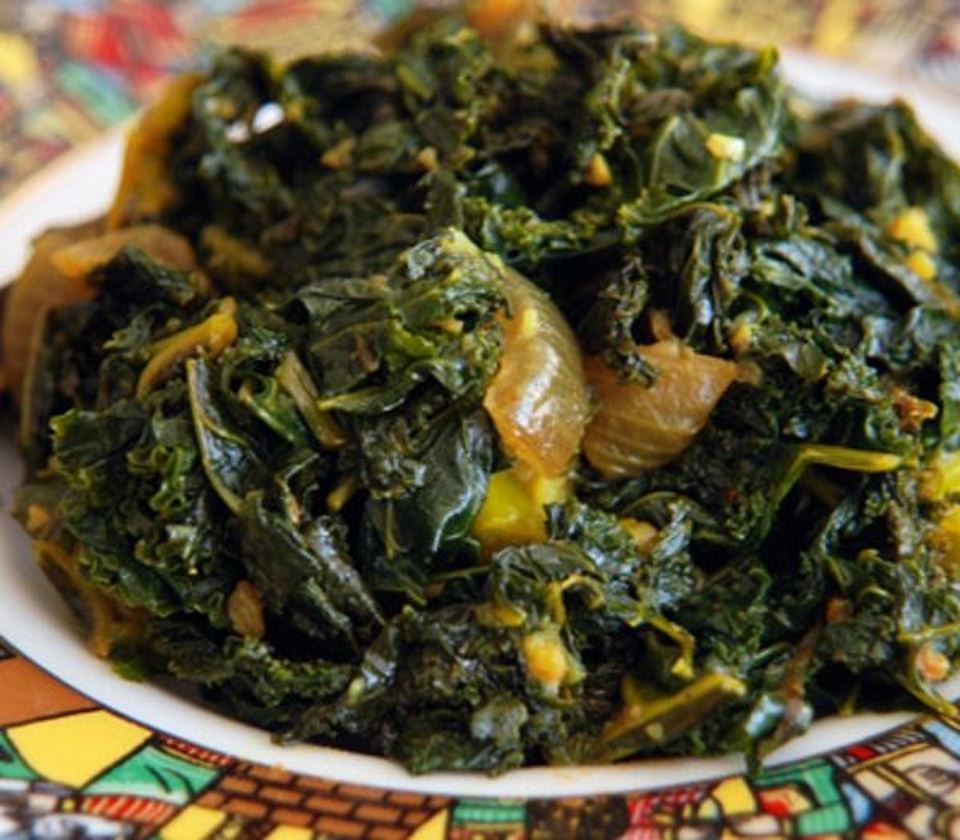
©fasikak.com
Gomen is a very popular vegetarian dish made with collard greens stir fried in butter and spices. While Gomen is delicious as is, it’s meaty version called gomen be siga is highly recommended for non-vegetarians. Gomen be siga has an extra zing thanks to chopped garlic, diced beef, vegetables, and spices. As always, it is scooped up with injera.
Sambusa



Sambusa is the Ethiopian version of the Indian samosa. This deep-fried crispy parcel of deliciousness is made with filo pastry stuffed with meat, vegetables or lentils. It’s the perfect companion to chilled beer after a tiring day!
Coffee


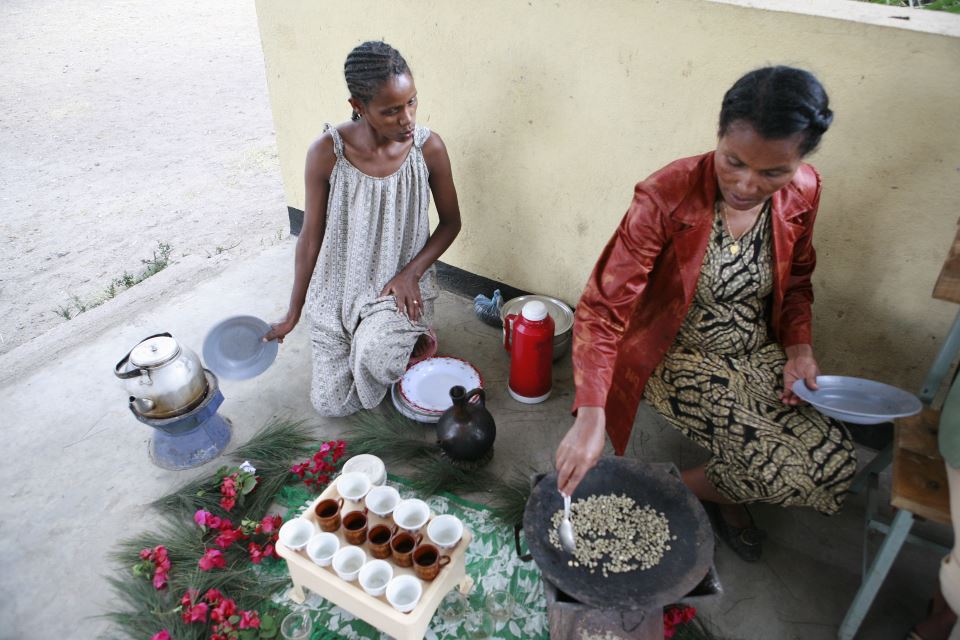
©Steve Evans / Wikicommons
Purists may argue that coffee is not food, but it’s impossible and unfair to leave it out when talking about Ethiopian delicacies. After all, Ethiopia is the birthplace of coffee! The country grows hundreds of varieties of coffee and most of the coffee in Ethiopia is wild-grown even today. While you’ll easily find coffee everywhere in the country, the best way to enjoy it is in a traditional coffee ceremony where you can chug a small cup of strong expresso brewed in a jebena or clay pot over charcoal. Although coffee is typically served with sugar, in some parts of Ethiopia it is often served with salt or kibbeh! A complete coffee ceremony features three rounds of coffee served with snacks like popcorn and toasted barley.
Tej



We’re going to slip in one more drink in our must-have Ethiopian food list. Purists can continue their debate till dawn! If there’s one drink Ethiopians love after coffee, it’s tej! Some even proclaim it as the national drink. A boozy, after-dinner sweet drink, tej is made with unprocessed honey. It is typically served in a berele, a rounded glass resembling a laboratory beaker. Don’t get fooled by tej’s deceptively sweet taste, it’s extremely high in alcohol. Although tej is usually homemade, you’ll find it in ‘tej houses’ across the country.
Roll up your sleeves and get ready to dig in!
Book flights to Ethiopia on EMI with Mihuru Splitfare. Explore the Book Now, Pay Later feature and try the best dishes to eat in Ethiopia.
Tags: Ethiopia









